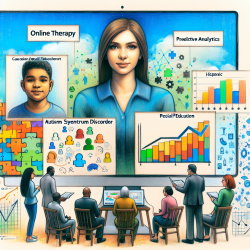The COVID-19 pandemic necessitated a rapid shift to telehealth services across many healthcare settings, including allied health professions (AHP). The study titled "Sustaining allied health telehealth services beyond the rapid response to COVID-19: Learning from patient and staff experiences at a large quaternary hospital" provides valuable insights for practitioners aiming to improve and sustain telehealth services. This blog will explore the key findings and recommendations from the research to help practitioners enhance their telehealth skills and encourage further research in this field.
Key Findings from the Research
The study used a mixed-methods approach, involving surveys and focus groups with patients, clinicians, and administrative staff. Here are the main findings:
- Both patients and clinicians confirmed that telehealth is a valid service model, especially during COVID-19 restrictions.
- Patients and clinicians preferred a blended model of telehealth and in-person care.
- Increased administrative support was necessary to meet the growing demand for telehealth.
- Technical support and training for both patients and clinicians were critical for effective telehealth implementation.
Recommendations for Practitioners
Based on the study's findings, here are some practical recommendations for practitioners to improve their telehealth services:
1. Embrace a Blended Model
Both patients and clinicians expressed a preference for a blended model of telehealth and in-person care. This approach allows for flexibility and ensures that services requiring physical examinations can be conducted in person, while follow-ups and consultations can be done remotely.
2. Enhance Administrative Support
The study highlighted the need for increased administrative support to handle the logistics of telehealth appointments. Practitioners should advocate for dedicated administrative staff to manage telehealth bookings and provide technical assistance.
3. Invest in Technical Training
Technical issues were a common challenge for both patients and clinicians. Investing in comprehensive training programs for both parties can significantly improve the telehealth experience. Training should cover the use of telehealth platforms, troubleshooting common technical issues, and best practices for remote consultations.
4. Improve Workflow Processes
Streamlining workflow processes can enhance the efficiency of telehealth services. This includes integrating telehealth platforms with electronic medical records and scheduling systems to reduce administrative burdens and improve coordination.
5. Foster a Culture of Continuous Improvement
Encouraging ongoing professional development and staying updated with the latest telehealth research can help practitioners continuously improve their telehealth services. Participating in telehealth workshops, webinars, and peer mentoring programs can provide valuable learning opportunities.
Conclusion
The rapid adoption of telehealth during the COVID-19 pandemic has shown that it is a viable and valuable service model for allied health professions. By embracing a blended model, enhancing administrative support, investing in technical training, improving workflow processes, and fostering a culture of continuous improvement, practitioners can sustain and enhance their telehealth services.To read the original research paper, please follow this link:
Sustaining allied health telehealth services beyond the rapid response to COVID-19: Learning from patient and staff experiences at a large quaternary hospital.










